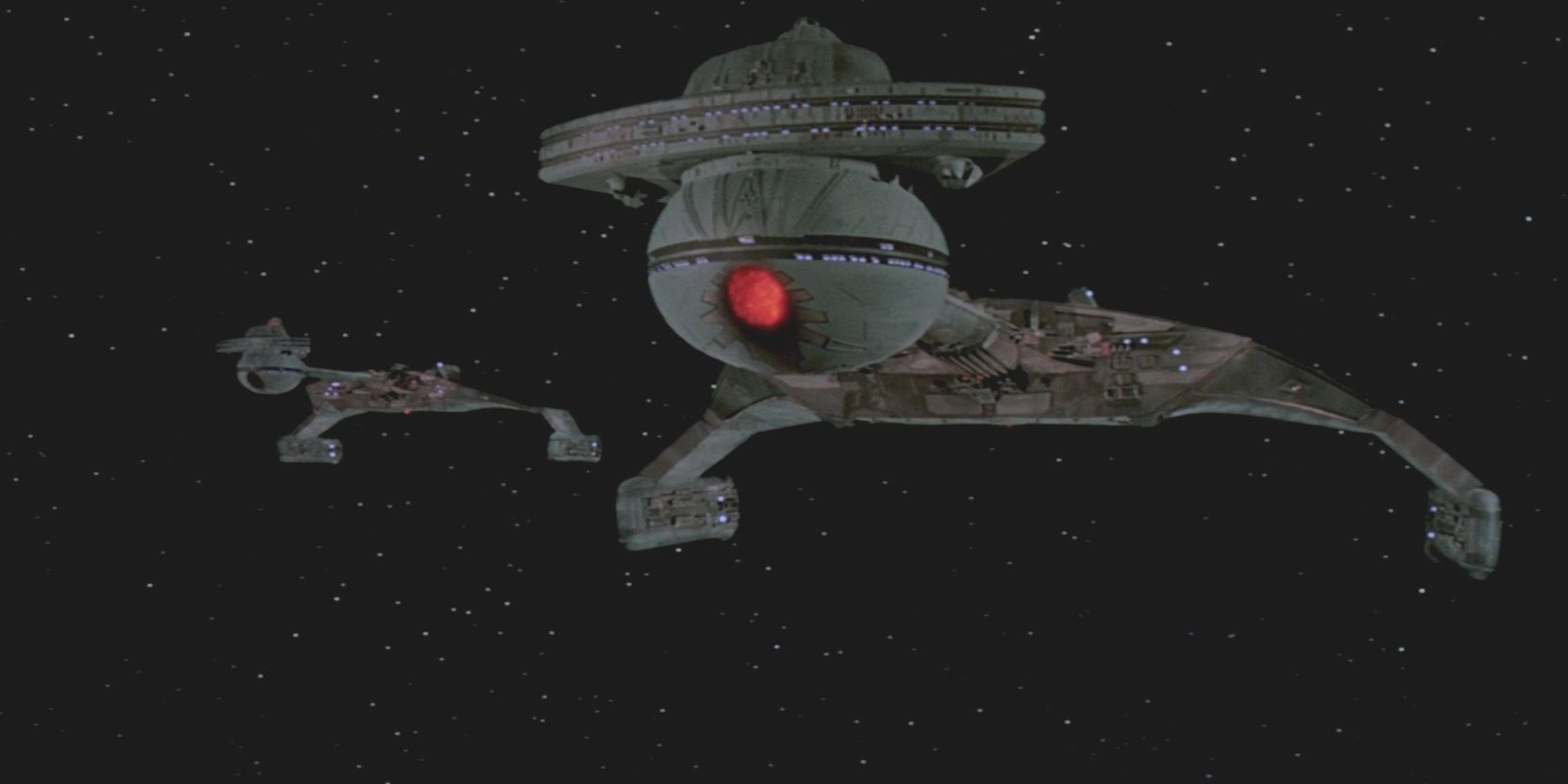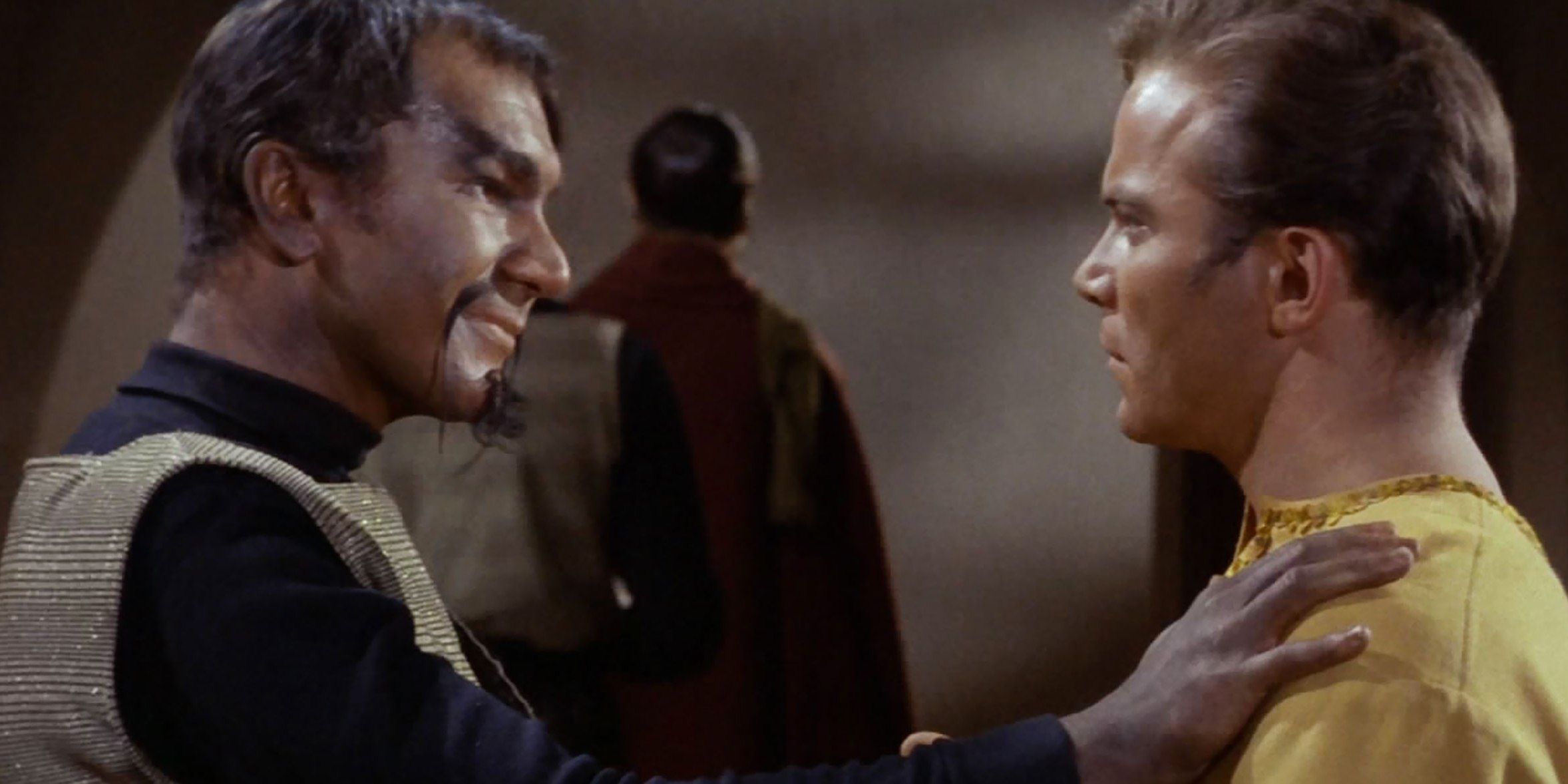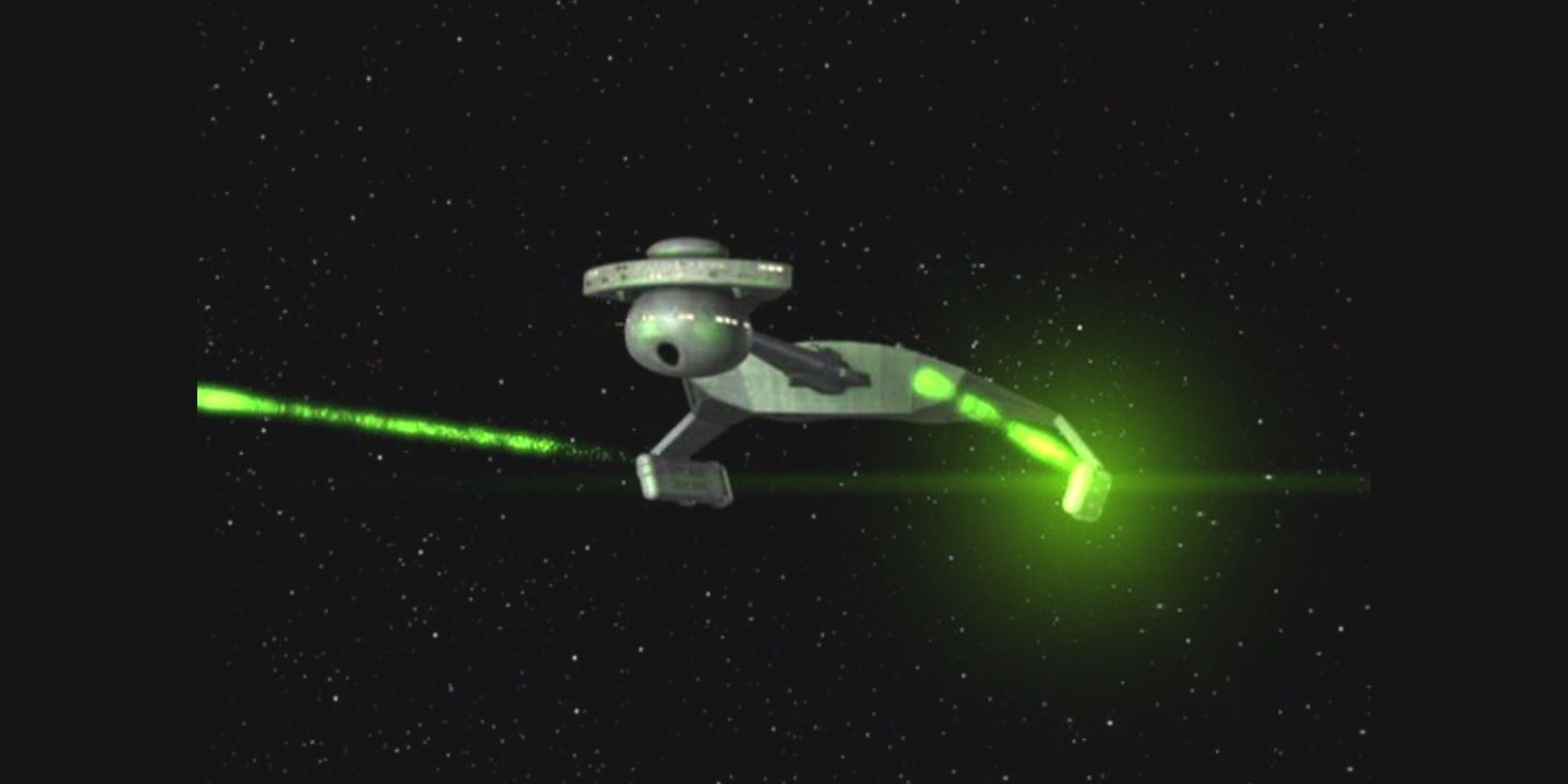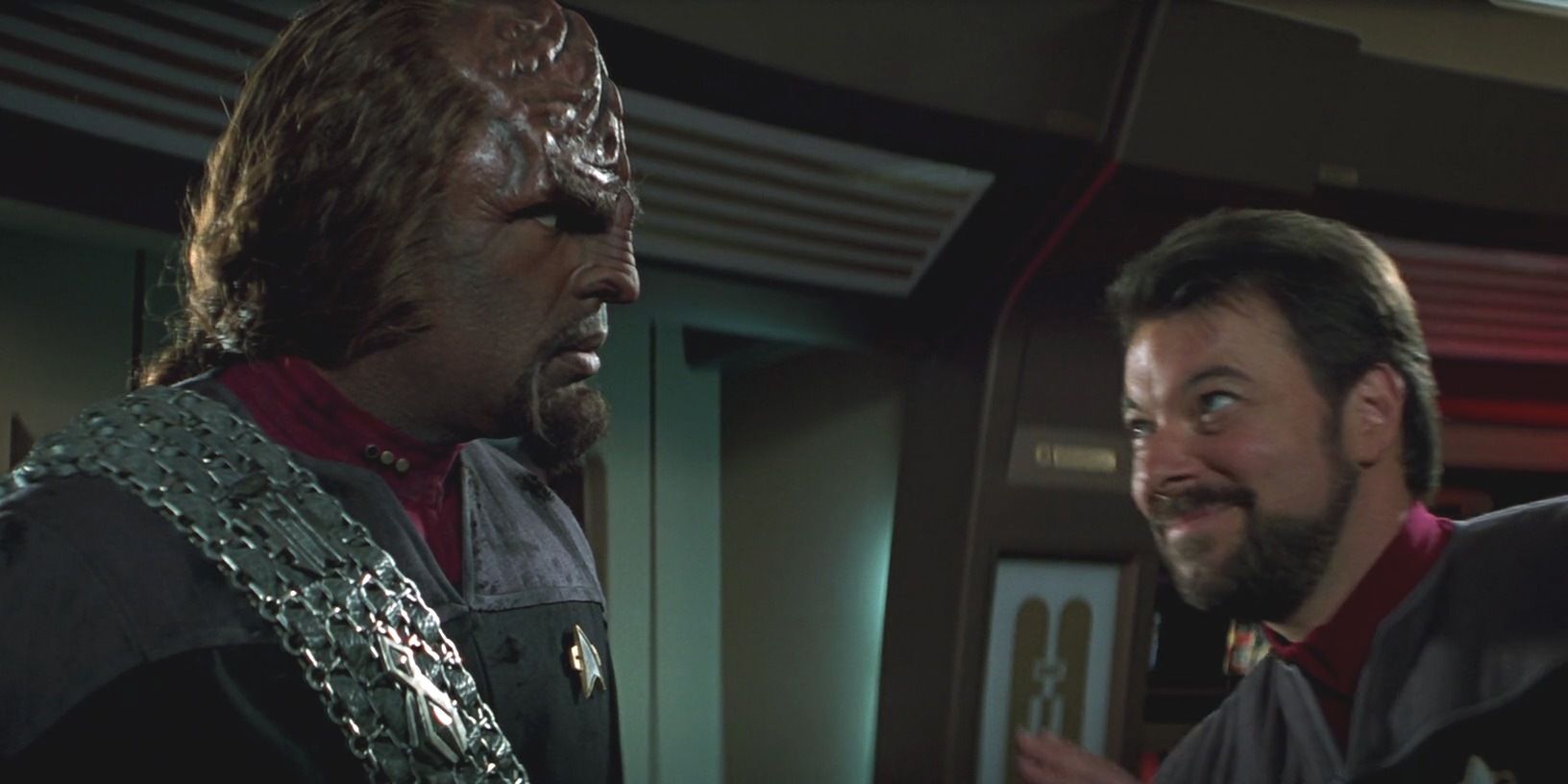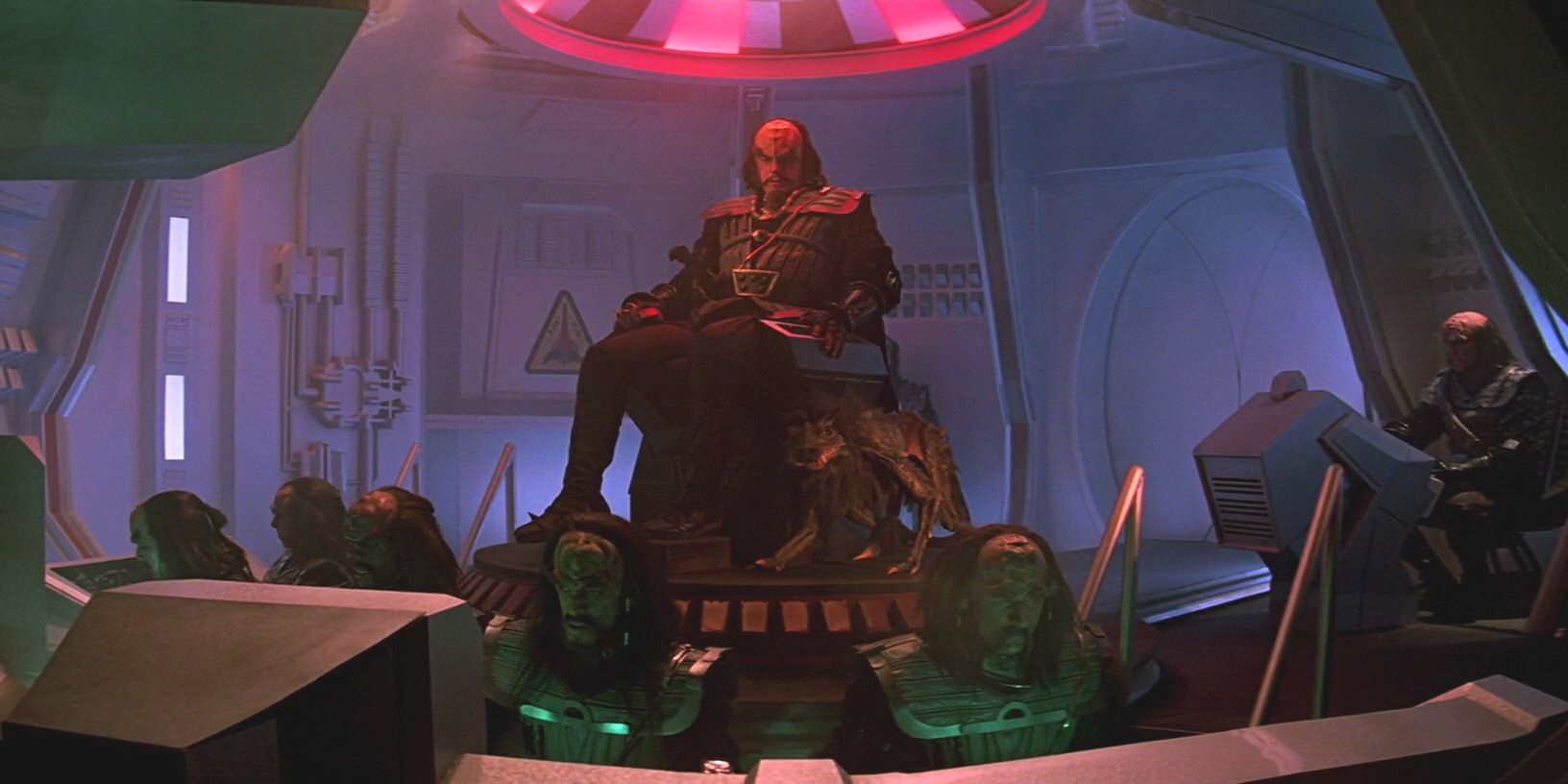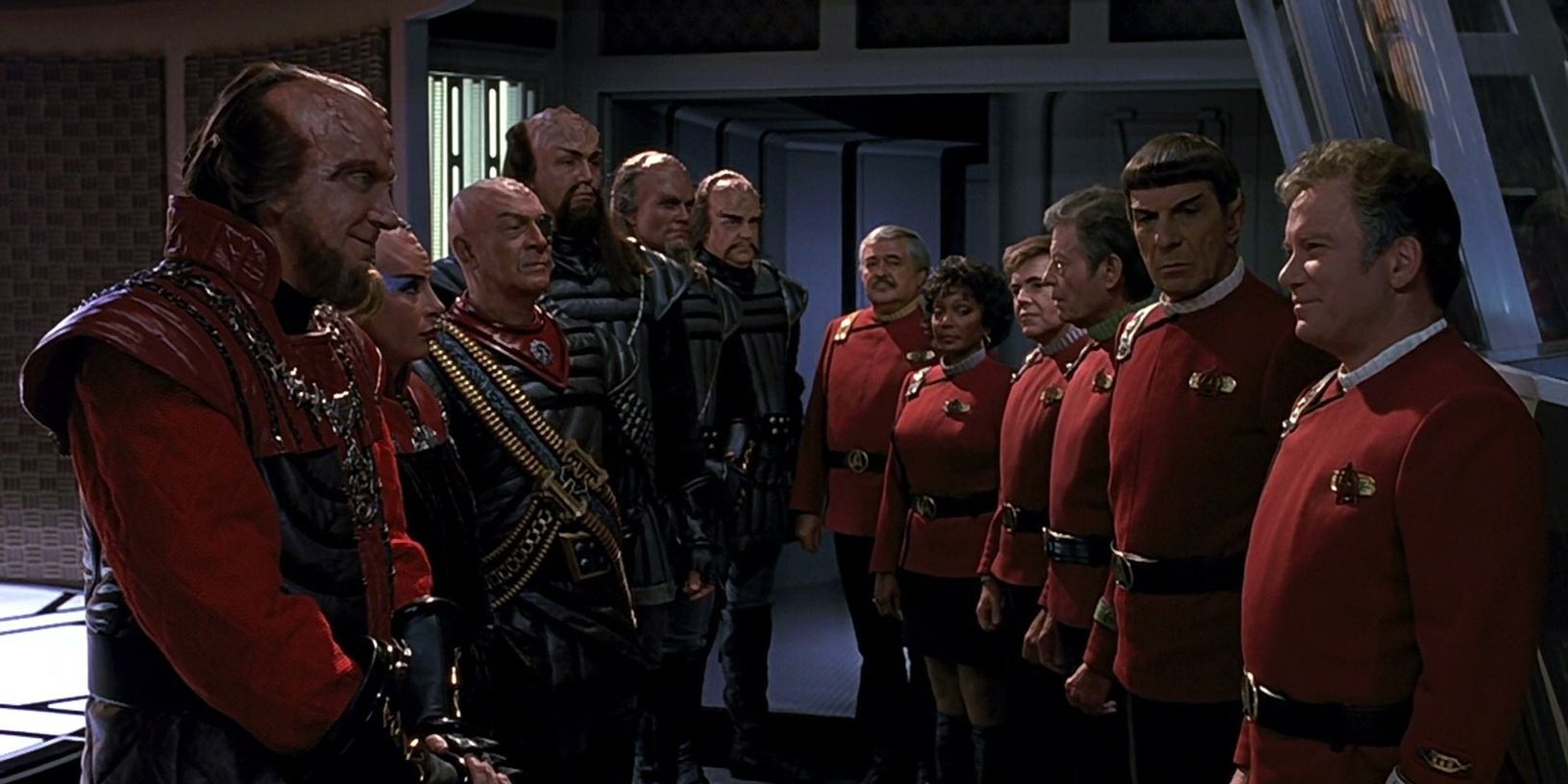The Klingon Empire has been a part of "Star Trek" for almost 50 years, appearing in every series so far -- including "Star Trek: Discovery," the latest television incarnation, which just started production. "The Next Generation" and its 24th Century siblings presented the Klingons mostly as the Federation's rougher-edged allies. With "Trek" going back to the 22nd and 23rd Centuries, though, the Klingons have again become antagonists -- so we presume they'll be bad guys in"Discovery," since it takes place a decade before the Original Series in the Prime timeline.
Still, they don't have to be one-dimensional bad guys, because "Discovery's" producers and writers can draw on some well-established backstory. As more information emerges from behind the scenes of "Discovery," it's a good time to look back on one of the "Trek" universe's most enduring cultures.
THE ORIGINAL SERIES
In his seminal 1973 analysis The World Of Star Trek, author and undisputed Trekspert David Gerrold -- writer of "The Trouble With Tribbles," among other things -- described Klingons thusly:
Klingons are professional villains. They are nasty, vicious, brutal, and merciless. They don't bathe regularly, they don't use deodorants or brush their teeth. They don't even visit their dentists twice a year. They sharpen their fangs by hand because they think pain is fun.
[...]
Klingons build their battlecruisers without toilets; it makes them nastier. Klingons pick on old ladies. Klingons fart in air locks. Klingons drop litter in the streets. Klingons pick their teeth in public. And those are their good points.
Klingons do all the things that men pretend they don't -- only Klingons are proud of it.
The Klingons were introduced in "Star Trek's" first-season episode "Errand of Mercy." Written by Gene L. Coon and directed by John Newland, it aired on March 23, 1967. "Errand" presented the Klingons as malevolent marauders, willing to kill innocents and run roughshod over planets in furtherance of their own manifest destiny. Indeed, the episode began with a Klingon sneak attack and a declaration of war. However, before long the omnipotent Organians had nullified both sides' weapons, imposed a peace treaty and predicted that in the future, Federation and Empire would become fast friends. This helped set the tone for the rest of the Klingons' appearances, as well as for "Star Trek" generally. Aside from being a powerful anti-war statement by itself, "Errand of Mercy" confirmed that "Trek" wasn't interested in telling space-war stories.
That didn't mean it couldn't tell Cold War allegories, though; and outfitting the Klingons -- which at the time only required swarthy complexions, exotic facial hair and simple costumes -- was more cost-conscious than using the Vulcanoid Romulans. Accordingly, the Klingons appeared in a total of six more Original Series episodes ("Friday's Child," "The Trouble With Tribbles," "A Private Little War," "Elaan of Troyius," "Day of the Dove" and "The Savage Curtain"), while the Romulans had only three ("Balance of Terror," "The Deadly Years" and "The Enterprise Incident"). In fact, the Romulan vessels in "The Enterprise Incident" were really Klingon battlecruisers -- explained as part of a deal between the spacegoing powers -- making their onscreen debut.
Although many Original Series Klingons were sneering villains, some distinguished themselves by sheer force of personality. "Errand of Mercy's" Kor (played by John Colicos) conveyed his menace with a smile and "Tribbles'" Koloth (William Campbell) disguised his with chuckles. In "Day of the Dove," Michael Ansara's Kang offered a blueprint for future Klingon warriors, as a captain who teamed up with Kirk and crew to defeat a rage-inducing noncorporeal being. Kang didn't give much ground, but he embodied the eminently-practical Klingon adage "only a fool fights in a burning house."
During the 1970s and early 1980s, when "Star Trek" existed either in reruns or the occasional movie, fleshing out the Klingons fell mostly to fans and quasi-canonical works. While the Klingons showed up regularly in both prose and comics stories -- including Konom, a defector who joined the Enterprise crew in DC Comics' "Trek" series -- the most extensive exploration of this sort came in John M. Ford's 1984 novel The Final Reflection. Set several decades before the events of the Original Series, it followed a Klingon boy's path to becoming a starship captain, and described the role he played in establishing detente between the Federation and Empire. Besides the Machiavellian plotting, Final Reflection was also full of details about everything from Klingon proper names to their development of transporters and warp drive. Much of it found an additional audience when Ford adapted Final Reflection for the Klingon supplement to FASA's "Star Trek" role-playing game.
Another intriguing what-if scenario came from the abortive mid-1970s "Star Trek: Phase II" TV series. Before being repurposed into "The Motion Picture," its producers and writing staff outlined 13 episodes, and the two-part "Kitumba" (written by John Meredyth Lucas) would have been "Trek's" first in-depth look at the Klingon Empire. In "Kitumba," the Enterprise was charged with returning the Klingons' rightful ruler (the titular Kitumba) to the throne, in order to unseat a belligerent warlord who wanted to attack the Federation. Just as the Romulans were based on the Roman Empire, "Kitumba" would have based the Klingons on Imperial Japan. Indeed, in this conception "Klingons" referred only to members of the warrior caste, with separate castes for scientists and ordinary subjects; and the Emperor would have been a mere figurehead.
Of course, while "Kitumba" never became part of "Trek" canon, subsequent series had ample opportunity to revisit the Klingons.
THE NEXT GENERATION
After appearances in the "Star Trek" animated series and the first four "Trek" feature films (particularly "Star Trek III: The Search For Spock"), Klingon culture got a big boost in 1987 with "Star Trek: The Next Generation's" Lieutenant Worf. As the first official Klingon in Starfleet, Worf (played by Michael Dorn) became the lens through which much of Klingon culture would be seen. He met other Klingons almost 21 years to the day after "Errand of Mercy" first aired, in "TNG's" March 1988 first-season episode "Heart of Glory." The second season introduced his significant other, Ambassador K'Ehleyr; the third season's "Sins of the Father" and "Yesterday's Enterprise" explored Worf's status and the Federation's relationship with the Empire; and "TNG's" fourth and fifth seasons featured the Klingon Civil War. Ironically, although the TV shows largely superseded The Final Reflection, writer/producer Ronald D. Moore (who penned "Sins of the Father" and many other Klingon-centric episodes) had been inspired by Ford's novel.
After "TNG" ended in 1994, its successor "Star Trek: Voyager" featured the half-human, half-Klingon engineer B'Elanna Torres. Unlike Worf, she downplayed her Klingon side, and since "Voyager" was lost on the other side of the galaxy, it avoided both the personal and political Klingon stories which had become "TNG" staples. Indeed, several months after "Voyager" premiered in January 1995, Worf joined "Star Trek: Deep Space Nine" at the start of its fourth season, and stayed through that series' end. To be sure, "DS9" hadn't lacked for Klingons, and had even reunited Kor, Koloth and Kang for a mission with Jadzia Dax.
Notwithstanding another short-lived Klingon/Federation conflict which played out in "DS9's" fourth season, the Klingons of the 24th Century were allies of the Federation, fulfilling the Organians' prophecy. (The last Original Series movie, 1991's "Star Trek VI: The Undiscovered Country," showed the origins of the peace process.) According to the 24th Century shows, Klingon society was built around the Great Houses, which elected the Klingon High Council and therefore indirectly elected the Klingon Chancellor. The TNG episode "Rightful Heir" explained that the Klingon Emperor was a mere figurehead. Indeed, by helping the Klingon leadership through an especially contentious transfer of power, Captain Jean-Luc Picard turned out to be an important figure in Klingon history.
As for Klingon individuals, "TNG" and "DS9" explained that they were guided mainly by the concept of honor. Worf himself was discommended in "Sins of the Father" as punishment for his late father Mogh's alleged treachery; but when Mogh's name was cleared Worf's honor was restored. The concept of honor played out in other ways as well. For example, in the "TNG" episode "The Enemy," the Klingons' traditional hatred of Romulans caused Worf to struggle with the decision to donate blood to a Romulan who could help the crew save Geordi La Forge. Later, Worf contemplated right-to-die issues in the episode "Ethics." One might even sum up the Klingon credo by asking whether "today is a good day to die."
The 24th Century shows demonstrated that Klingons got ahead through a mixture of toughness and guile -- although mostly toughness -- and stayed on top by knowing when to use one or the other. Respect was earned through battle, although honor mattered more than winning. Generally they came across as a star-spanning blend of barbarians, Vikings and motorcycle gangs, with only a minimum of civilizing influence.
TODAY'S KLINGON
After "Deep Space Nine" ended in 1999, the Klingons faded into the background. "Voyager" wasn't that interested in B'Elanna's heritage; and while "Enterprise" opened with the proverbial "disastrous first contact" -- namely, a Klingon crashing into an Oklahoma field -- Captain Archer and crew soon had bigger problems with the Suliban and Xindi.
"Enterprise" did reveal one major turning point in Klingon history: the answer to the "forehead question." As described above, the Original Series Klingons were basically humans in swarthy makeup wearing black turtlenecks and sleeveless gold tunics. Since 1979's "Star Trek: The Motion Picture," though, Klingons have been upgraded. Their makeup now includes prominent forehead ridges and wilder hair, as well as armored costumes which emphasize the upper torso. "Enterprise" explained that these were the real Klingons, and the more human-looking types were the products of a 22nd Century genetic-engineering virus.
"Star Trek: The Motion Picture" also opened the door to a more practical (relatively speaking) application of Klingon culture. Thanks to actor James Doohan, "TMP" included a bit of Klingonese via some simple battle-oriented commands. Linguist Marc Okrand then built a more elaborate language for 1984's "Search For Spock," which was used in subsequent projects. Before long, there was enough Klingon language to support real-world academic courses, and today the Bible and the works of Shakespeare have been translated into Klingon. (Hamlet was a little tricky, since Okrand hadn't given the Klingons an exact counterpart for the verb "to be.")
When J.J. Abrams and company restarted "Star Trek" in 2009 with the Kelvin Timeline, their Klingons were reduced to a deleted scene. However, Klingon starships were part of the Kobayashi Maru simulation, and dialogue revealed that Nero's crew spent some 28 years in a Klingon prison camp. Of course, in "Star Trek Into Darkness" Kirk pursued "John Harrison" to the Klingon homeworld, where his landing party encountered Klingon warships and a squad of Klingon warriors, and Uhura got to show off her Klingonese fluency. Neither movie used the Klingons for much more than their traditional space-barbarian role; and, for whatever it's worth, Admiral Marcus considered war with the Klingons inevitable. Since "Star Trek Beyond" didn't have Klingons at all, fans may have to wait for future Kelvin-timeline movies to see how right he was; or whether these Klingons will follow their prime-timeline counterparts.
That brings us back to "Discovery," which has cast three Klingon roles already. T'Kumva (Chris Obi) will attempt to unite the Klingon houses, Captain Kol (Shazad Latif) is his protegé, and L'Rell (Mary Chiello) is a battle-deck commander. This suggests an ongoing Klingon-politics subplot, at least superficially reminiscent of Picard and Worf's once-and-future brushes with the Klingon government. However, since "Errand of Mercy" is still ten years in "Discovery's" future, odds are good that the Federation and Empire won't get too chummy over the course of "Discovery's" run. On the other hand, "Enterprise" revealed that the Organians had been watching humanity over 100 years before "Errand of Mercy," so perhaps "Discovery" will feature a little of their benign influence as well.
The timing of "Discovery" may also work out well for the kinds of Klingon stories it will tell. Ever since 1967, the Klingons have been surrogates for the Soviet Union and Russia. As the real world worked its way through the Cold War, the Klingons' place in the "Trek" universe also changed. In 1968's Vietnam allegory "A Private Little War" they were pretty clearly in the Communist-aggressor role, and in 1984's "Search For Spock" Commander Kruge and crew were infiltrating Federation territory to steal the secrets of the all-powerful Genesis Device -- killing Kirk's son David in the process. (One wonders where the Organians had gone.)
Nevertheless, "The Next Generation" premiered after Soviet premier Mikhail Gorbachev's glasnost and perestroika signaled a new "openness" with the West; so "Trek" responded with Worf and the Klingon-Federation alliance. 1991's "The Undiscovered Country" even mashed up Gorbachev and Abraham Lincoln in the Klingon Chancellor Gorkon (played by David Warner); and added a Chernobyl-like disaster with the destruction of Praxis. Gorkon's assassination (by Federation and Klingon conspirators) might have been Lincoln-esque, but it unintentionally mirrored the failed August 1991 coup against Gorbachev. In a further coincidence, the Soviet Union itself dissolved on December 26, 1991, less than three weeks after "Star Trek VI" opened.
With American and Russian relations entering a new phase, and many in the West once again uncertain about Russia's capabilities or intentions, certainly there's ample opportunity for "Discovery's" Klingons to be similarly unpredictable. To use Picard's phrase, it is a period of "cowboy diplomacy," even with Sarek of Vulcan around; and one expects "Discovery's" officers to deal with the Klingons very differently from how Picard did. In an era without Organians holding back the galactic superpowers, the stakes are even higher. Conversely, that may force the Federation and Klingons into more subtle strategies. (Maybe there are Federation officials who see business opportunities; and maybe there are Klingons looking to spread propaganda?) In particular, the Klingons may end up channeling their belligerent tendencies into indirect manipulations and maneuvers. It would be a somewhat counterintuitive portrayal of a race famous for its lack of pretense.
By the same token, though, it would give "Discovery" a chance to take what 50 years of "Trek" has given, and fashion it into something both familiar and new. Regardless of era, Klingons shouldn't settle for being merely scary or crude. They just have to help "Star Trek" teach us more about ourselves.

